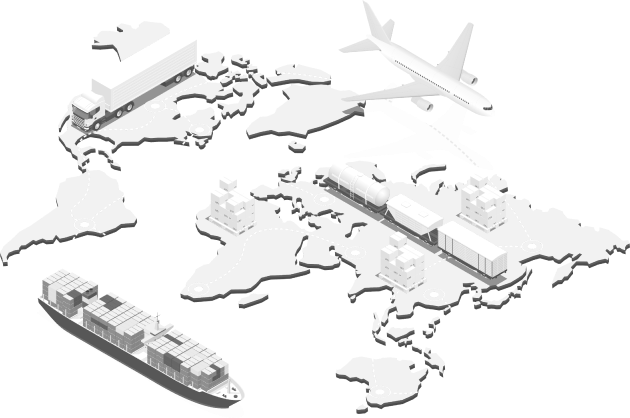 Last time we checked in here to discuss the phenomenon that is the Colombian Flower Industry, and how many fresh flowers they export to the United States. This time around, let’s tip-toe into just how well Colombia’s neighbor, Ecuador, is doing in the same field – because in the flower world, these two neighboring countries not only are giants in the industry, but also friendly competitors.
Last time we checked in here to discuss the phenomenon that is the Colombian Flower Industry, and how many fresh flowers they export to the United States. This time around, let’s tip-toe into just how well Colombia’s neighbor, Ecuador, is doing in the same field – because in the flower world, these two neighboring countries not only are giants in the industry, but also friendly competitors.
It makes sense that they would be. The climatic conditions present in both regions are similarly ideal for flower growing. Like its neighbor to the north also straddling the equator, Ecuador takes full advantage of its global position in the heart of the Andean highlands.
Most notably, the abundance of sunshine, high altitude, warm days, and cool nights are virtually ideal for producing what have come to be known as the highly sought-after Ecuadorian roses. Simply gorgeous with large blossoms and sturdy stems, they comprise the primary cut-flower crop that Ecuador is most known for. And worldwide demand for them has been increasing over the past 20 years – as the Ecuadorian flower market supplies over 70 countries worldwide.
A History of the Flower Industry
The cut-flower industry as we know it today was introduced to Ecuador in 1983. It took almost a decade before it would truly take root. The Andean Trade Preference Act of 1991 was enacted which allowed for the tax-free export of cut flowers from Ecuador to America. The timing was ideal. Between 1995 and 1998, the cut flower industry grew an amazing 37 percent each and every year until flowers grew to become one of the country’s largest and most profitable exports.
There were growing pains, of course. Concerns over working conditions and environmental impact initially hurt Ecuador’s rose production. In 1999, the International Code of Conduct for the Production of Cut Flowers was introduced to the country. This code of conduct would form the basis for the Flower Label Program (FLP) which would ensure that workers within the cut flower industry were treated and compensated fairly.
Ecuador took further efforts in 2001 when the Centro de Estudios y Asesoria en Salud would begin inspecting Ecuadorian flower producers to ensure compliance with all FLP standards. Currently, more than 10 percent of Ecuador’s floriculture industry is certified by the FLP.
The Heavyweights: Ecuador vs. Colombia
Because it is so much smaller, Ecuador uses significantly more of its acreage, proportionally speaking, than Colombia does for flower farming.
- Almost 16 percent of all cut flowers exported throughout the world are grown in Colombia, and nearly 10 percent come from Ecuador. (The Netherlands produces nearly 50 percent.)
- Colombia and Ecuador dominate each other in different countries. Colombia exports more flowers to the US, Canada, the UK, Japan, and Korea – and Ecuador takes the lead in Germany, China, and Spain.
- Many of Colombia’s flowers are actually Ecuadorian flowers, meaning they have been exported via the port of Quito – not from Colombia itself.
And also remember, Ecuador is famous for its beautiful and longer-lasting roses – a market that can’t be overlooked.
A Napoleon Complex?
Ecuador is about four times smaller than Colombia. Despite this, they continue to grow as an exporter of fresh-cut flowers, especially roses. Many Ecuadoran growers are now paying closer attention to environmental concerns and certification programs that demonstrate their proactive farming measures. Farmers are revising their outdated heating and lighting systems, and they’re implementing irrigation systems that use far less water.
At the same time, these farmers are reducing the volume of pesticides and chemicals they use by introducing natural pest repellants. Changes like these are giving Ecuadorian Roses the reputation of having a beauty that lasts longer. Perhaps that makes up for the country’s size?
Playing our Part in Industry’s Success
Launched in 2001, the predecessor of Prime Group initially began service to represent several air cargo carriers involved in transporting Ecuadorian flowers to Miami out of Quito. The operation soon expanded into Bogota, New York, Los Angeles, and Amsterdam – and is now a major worldwide enterprise with agents all across the globe.
“We understand that keeping up with the demand for flowers from Ecuador
involves an intricate and delicately balanced supply chain of workers, farmers, wholesalers, in-country forwarders, airlines, cargo ships, traders, florists, wholesalers, and supermarkets,” says Cristina Moscoso, Prime Fresh West Coast.
“Getting something as delicate as flowers from one continent to another while maintaining their integrity – and beauty of course – technological feat,” she adds, “but we have years of experience in this field and our customers depend on it.”
We use industry-leading technology such as vacuum cooling, sorting, repackaging, barcoding, labeling, and temperature monitoring to guarantee consistent, safe, and a fresh delivery of flowers to their final destination – along with a wide range of other perishable goods such as fresh fruit and vegetables fine chocolates, and even preserved flowers.
Also under the umbrella of Prime Group is Prime Logistics, specializing in shipping non-perishables for a multitude of customers in Ecuador representing commodities ranging from oil-well equipment to straw hats (Panama hats) and so much more in between.
PFH Global Services
Whether it’s a box, a pallet, or a companywide logistics operation, Prime Fresh Handling (PFH) is skilled in achieving safe on-time delivery of time- and temperature-sensitive material and products between any point of origin and destination around the globe.
In fact, PFH is also known as a global leader in perishables transportation of fresh produce, fish, cut flowers, and plants. With state-of-the-art facilities in Europe, South America, and across North America, PFH leverages industry-leading technologies such as vacuum cooling, sorting, re-packing, barcoding, labeling, and temperature monitoring to guarantee a consistent, safe, and fresh delivery.
Contact Prime Fresh Handling
- Alex Paredes, PFH-East Coast: 516-837-9777 or via email at infopfh@prime-fresh.com
- Cristina Moscoso, PFH-West Coast: 323-328-8650 or via email at infopfh@prime-fresh.com
- Also, visit www.prime-fresh.com

